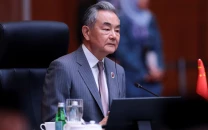Reforming governance
Policy formulation, regulation and the running of public enterprises should be separated.

The writer is Distinguished Professor of Economics at Forman Christian College University and Beaconhouse National University
The institutional origin of the simultaneous emergence of slow economic growth, inflation and unsustainable budget deficits today is located in a governance structure where the Ministry of Finance is in practice managing all three of these parameters of economic performance. Each of the tasks of governing markets for growth, controlling inflation and managing the budget, requires specialised expertise and exclusive focus. Therefore, a more efficient institutional arrangement would be to let a genuinely autonomous state bank concentrate on inflation control and to require the Ministry of Finance to manage the budget and be held accountable if there are any slippages from the fiscal deficit targeted at the beginning of the financial year. The task of managing growth and income distribution cuts across the different specialised sub-fields in economics and should be left to an autonomous and sufficiently empowered Planning Commission (PC). At the moment, the PC is merely an appendage of the Ministry of Finance and is reduced to overseeing public sector development programmes. Even this it does in a haphazard fashion because the priorities of disbursing funds to projects are not determined by an overall growth strategy but by shifting political pressures emanating from various rent-seeking lobbies.
A triangular policymaking structure whereby economic growth, inflation control and budget management are conducted by separate state organisations, each strengthened with specialised professionals, may be more efficient. It would also enable checks and balances because the State Bank of Pakistan, the Ministry of Finance and the PC, respectively, would report independently to the prime minister who could subject their specific organisational policy perspectives to discussion and debate before taking key strategic decisions.
Dr Nadeemul Haque, the outgoing Deputy Chairman of the Planning Commission, had, in May 2011, prepared the Framework of Economic Growth (FEG). It draws upon the literature of the New Institutional Economics to chart a new course for the economy. The FEG proposes a change in the institutional structure and the associated incentives/disincentives through which the dormant entrepreneurship could be unleashed for sustained high GDP growth. I had, in my earlier published work, used the term ‘economic architecture’ to suggest that there were structural tendencies in Pakistan’s economy for an aid dependent stop-go pattern of growth and endemic poverty. Dr Haque went further to suggest that the first step to break out of this mould is to reform the “architecture of governance”. This is true, because any fundamental change in the direction of economic policy requires a change in the decision-making structure within which policy is formulated and implemented.
The basic principle of governance reforms is to have multiple nodes of policy ideas, with each node specialising in a particular field of economic policy and allowing intellectual tension between them. Simultaneously, policy formulation, regulation and the running of public enterprises should be separated. These ideas for governance reforms are an integral part of Dr Haque’s legacy embodied in the FEG. What the FEG ignores, however, is that markets left unfettered do not always deliver efficient outcomes and so have to be carefully regulated. Equally important, the strategic economic objective is not just growth but a growth that is powered by the talent and enterprise of all of the people rather than only the entrepreneurial elite.
Published in The Express Tribune, May 13th, 2013.
















COMMENTS
Comments are moderated and generally will be posted if they are on-topic and not abusive.
For more information, please see our Comments FAQ